After my second experiment in binaural recording, described in Part 2 of this series, the third area of my research focused on the importance of the ears, rather than the head, to the quality of the recorded sound. The pdf article I had orginally read on the subject had stressed the importance of the shape of ears, rather than the presence of the head, and at least one range of well-known commercial binaural microphones, the 3dio, consists of ears without a head.
So, I set about sourcing a pair of realistic ears. Some of these can be prohibitively expensive, but I found a type that were more reasonably-priced (a little under £6 for the pair, from China), moulded in silicone, and intended for acupuncture, it said, or medical study.
When they arrived I was surprised, as they were heavier, softer and more flexible than I was expecting – nothing like the hard, fixed ears of the dummy head. Much more realistic, and softer even than real human ears.
Unfortunately, as you can see here, the right one – on the left in the picture – had been rather crushed in the post, with the ear lobe bent right over:
The insides of the plastic bags seemed quite moist, so I was hoping that if I pulled the ear lobe back and stored the ear upside down, with a bit of weight on it, it would still be malleable enough to return to something like its original shape. Perhaps when taken out of the bags, the ears would then harden up in the right shape.
In the end I had to use a dab of hot glue to pin the ear back to its proper place. The ears became less moist, but not really less floppy after being out of their bags for a few days.
*
The next part of the plan was a pair of ear muffs, readily available from Chinese sources on eBay at about £1. They come in all sorts of colours and finishes, but the ones I picked on had a fur interior and a faux-leather finish on the outside:
The reason I chose this type was that the fur would provide a certain amount of sound deadening, and the faux-leather would take hot glue.
More hot glue? The glue, of course, was needed to attach the silicone ears to the ear muffs!
The purpose of this was to be able to use the ears in different contexts, either attached to a dummy head, or used on their own, relying on the ear-shape for the binaural effect, rather than the whole head.
Accordingly, I first obtained a cheap polystyrene dummy head and inserted some long nails to act as a support for the ear muffs:
It took a few tries to get the exact locations for the nails, but I fairly soon had them in the right place to hold the ears at the correct angle:
I then cut a small block of polystyrene to a suitable size to fit the ears on as a free-standing unit. I estimated that 14-15cm would be a suitable separation distance for the two ears and trimmed the polystyrene accordingly:
The final and most important stage was to add the electret capsules inside the ears and attach a twin phono lead for the output to the preamplifier.
I used smaller capsules than the ones I had used in the dummy head, as it was difficult to make holes in the silicon ears. In the end I used my polystyrene cutter, which has a small heated blade, inserted the cable between the silicon block and the ear muff backing, attached the capsules and then pushed them down into the ear canal towards where the ear drum would be.
These photographs illustrate this process:
You can also see a certain amount of melted silicone debris, which I had to remove.
After tidying this up and testing the sound was OK, I superglued the cables along the back of the ear muffs to keep the microphones from moving, and the project was finished. As soon as there is some better weather, I’ll be able to go out and test the three different binaural systems together.
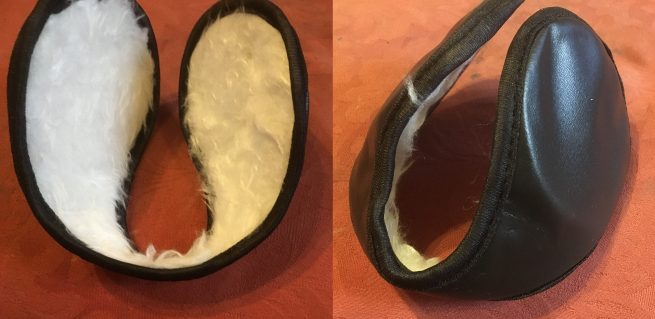
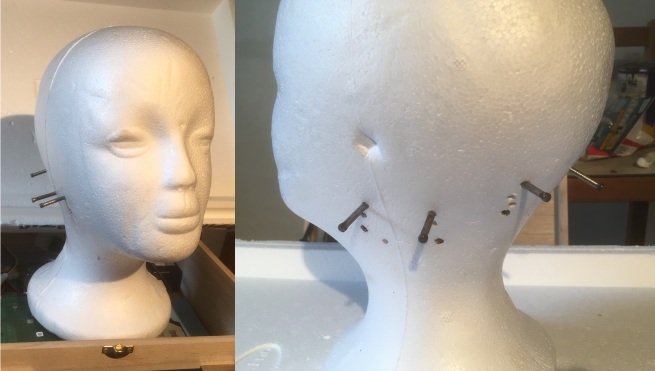
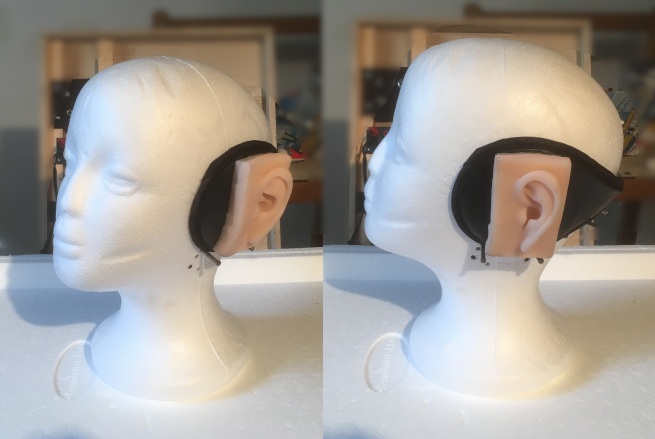
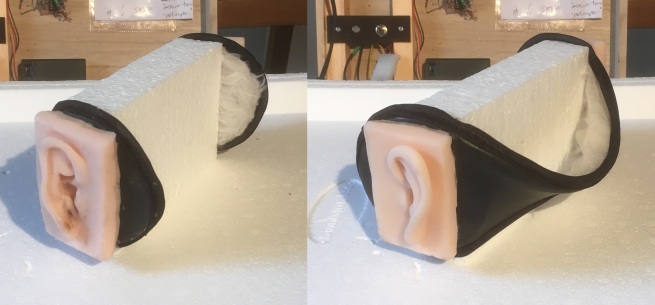
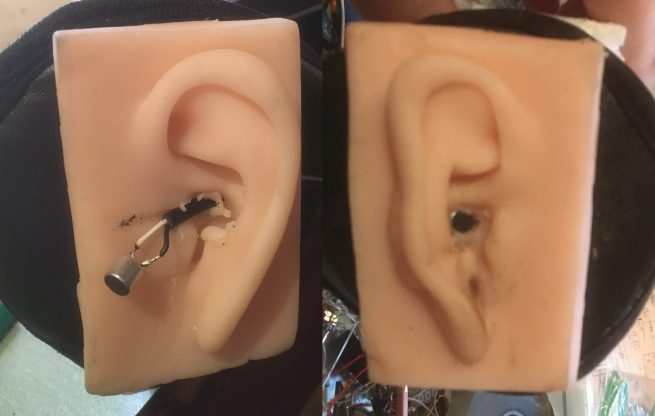

0 Responses to “Binaural Recording, Pt 3”